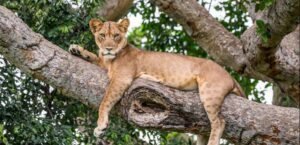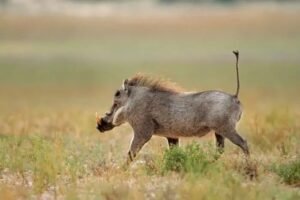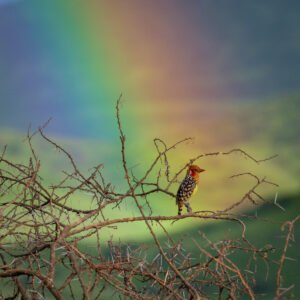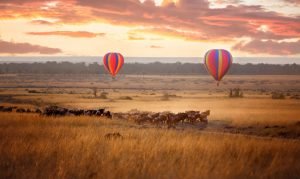
BUFFALO FACTS! WHY ARE THEY SO MUCH FEARED BY HUNTERS
Unusual African buffalo facts: why are they so feared by hunters?
African buffaloes are known to kill more hunters in Africa than any other wildlife animal. Many stories are told about how they ambush hunters that have wounded them during hunting expeditions.
Description
Adult males are black or charcoal grey while the females have slight tinge color. The hair is short and course. They have large heads and thick necks on their massive bodies with short limbs. The horns grow from the thick bosses on the forehead.
The horns flare sideways and downwards and then curve upwards to the tip.
African buffalo anatomy Males Females
Total length 3,2 meters 3 meters
Shoulder height 1,45 meters 1,4 meters
Weight 625 kilograms 530 kilograms
What is the preferred habitat of buffaloes?
Buffaloes prefer open and wooded savanna with suitable grass cover. They seek out good grazing in the early morning and late afternoon hours. They need water every day.
They are best seen during the African summer when grazing is rich. At these times breeding herds are usually a few thousand strong. As they African sun starts burning towards noon they disappear into thick cover to rest. They are not very difficult to spot because their movements are fairly predictable. You may notice the adult male buffalo wallowing in mud as a protection against biting flies and to keep cool.
What do African buffaloes eat?
Buffalo are predominantly grazers but they will browse shrubs and forbs if grass is unavailable. They prefer leaves to stems because the leaves are more nutritious.
They do most of their grazing at night, in the early morning and in the evening so that they can escape the heat of the day by standing or lying in shade. Buffaloes drink up to 40 liters twice a day; after the morning feed and before the evening one. To obtain minerals and trace elements lick termite mounds and the mud stuck to their companions.
How do buffaloes breed?
Buffalo bulls detect when a cow is on heat by regular sniffing of her genitals and urine. During the three days that she is on heat, a female gets the attention of bulls that court her by laying their chins on her rump.
It takes a buffalo bull at least eight years to fight his way high enough up the dominance hierarchy to secure opportunities to mate. Old males beat off other males by virtue of their greater size and long combat experience.
A female buffalo remains with the herd when she gives birth. The calves are not very fast runners and they sometimes get left behind with their mothers if the herd bolts.
The calf suckles for about 15 months. Social ties remain strong between female calves and their mothers. Male calves disperse into the main herd.
Are African buffaloes territorial?
Buffalo herds have home ranges that do not overlap with those of neighboring herds but are seldom defended as territories. The home ranges of old bulls may be as little as three to four square kilometers.
Herds use known routes. Herds are led between their water and grazing areas by bulls or cows in the upper half of the dominance hierarchy.
How is dominance established in a large herd?
The pecking order is established when the bulls start with a number of ritualized threats. You can observe the intention to confront is signaled by a head high pose with its nose pointing downwards and its shoulders hunched.
If the bull wants to emphasize its size it may stand sideways to its opponent. A submissive buffalo will hold its head low and horizontal so that its horns are back. If the two animals are very close together the submissive bull will put its nose under the belly of its superior. More intense threat displays involve head-tossing, short chases, horn hooking and soil gouging.
What are the privileges of a high social ranking in buffalo circles?
High rank provides the privilege of traveling and feeding in front and at the center of the herd. Why would this be important? Practically this means obtaining the best grazing and in addition maximum protection from predators. The low-ranking animals at the back have to graze what the herd leaves behind and also suffer most heavily from predation.
Is the African buffalo a dangerous animal?
The reason early trophy hunters included the African buffalo, as one of the big five is that they were considered to be one of the most dangerous species to hunt. When hunted by humans, buffalo have a reputation for circling back on their pursuers and counter attacking.
The danger lies with older males who usually live away from the herd. Their “attack is the best defense” strategy can make them very dangerous Old buffalo males tend to wander solitary or to form small groups of up to about half a dozen and are probably more easily provoked into an attack.
The reason for this relates to the fact that they lack the safety in numbers of the bigger herds. Buffalo in herds are placid, although some of the old bulls in the herds tend to be easily angered and prone to charge when disturbed. Large herds are usually very relaxed and unlikely to attack.
Occasionally a full-scale fight is necessary. At this time the combatants will charge each other with their heads up and at the last moment lower their heads for a bone-crunching crash. The weaker bull will be pushed sideways and immediately breaks and runs to avoid a horn in the flank.
When two 800-kg African buffalo bulls charges each other head-on the impact is equivalent to a car hitting a wall at 50 km/h.
It is thus not very surprising that nearly all fights are usually finished after the first full-scale charge. Buffalo are very gregarious and live in large herds containing up to a few thousand animals of both sexes and all ages.
Some of the young bulls form bachelor groups. The largest herds are seen during the dry season. Old males tend to wander solitary or to form small groups of up to about half a dozen.
Who are their most important predators?
Lions are their most important predators but spotted hyenas also take them as food.
How do African buffalo defend themselves from predators?
Lions will wait near water that buffalo must have every day. Female lions do most of the hunting, will decide on a attack tactic depending on the number, size and strength of the buffalo herd they plan to attack. They will sometimes wait near the water for buffalo to approach. The lions will try to break the buffalo’s neck.
Obviously the animals on the fringe of a herd are more vigilant than those in the middle. When panicked a whole herd will stampede, to the peril of any predator in its path.
A herd is very protective of its members. Distress bleats of calves will bring the entire herd to the rescue. Lions have been observed being chased up trees by buffaloes.











